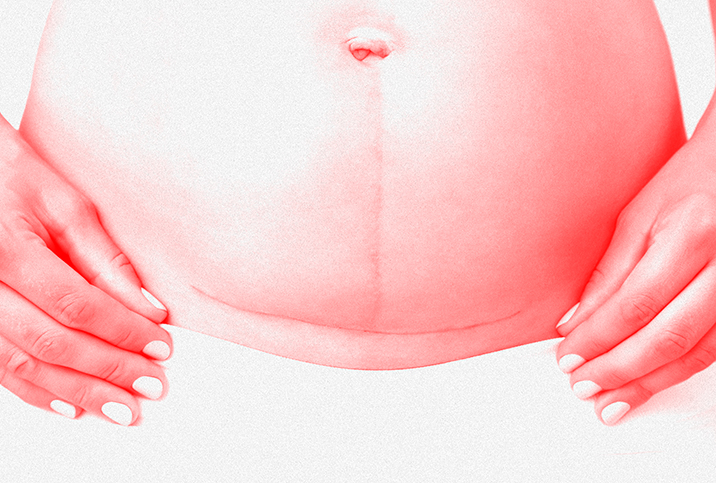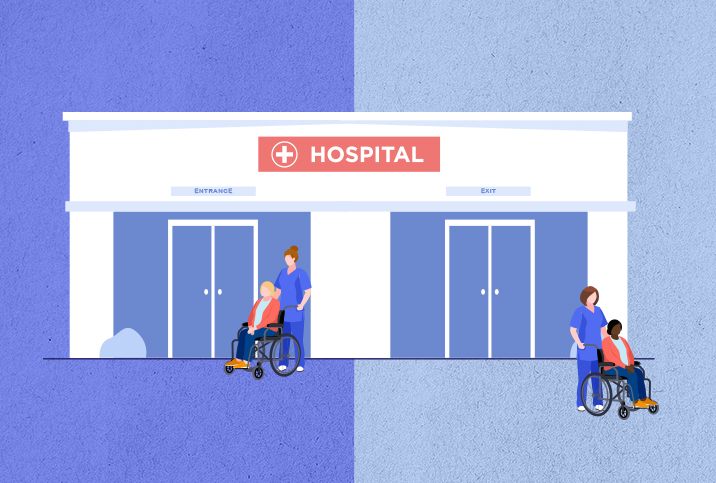Your Burning C-Section Questions Answered

The recovery process after a cesarean section is often misunderstood, affecting both your mental and physical health.
Unforeseen circumstances and the necessity for a C-section are always a possibility. So even if a C-section isn't part of your original birth plan, it's essential to be informed just in case. Whether you're planning one or there's a possibility you might require a C-section due to a preexisting condition, a better understanding of the procedure may help you feel safer.
What happens to your body during a C-section?
The first thing to know is that a cesarean section is major abdominal surgery, explained Rachel Welch, postnatal fitness instructor and founder of Revolution Motherhood. During the surgery, you'll be awake, with the lower half of your body anesthetized. Performing a C-section requires severing all of the layers of tissue from your skin to your uterus.
The incision size and location are determined by various factors, including your anatomical structure and the baby's position. Since the goal of a cesarean section is to ensure a safe delivery for both you and your baby, this may mean more damage being done to your abdominal wall in some urgent situations. But more often than not, the incision is small, precise and close to the pubic bone, said Welch.
What can you expect postdelivery?
As you come out of surgery, the anesthesia and other drugs will begin to wear off. As a result, you should start to experience postbirth vaginal bleeding and discharge. You can also expect abdominal pain and soreness, said Kecia Gaither, M.D., a double board-certified physician in OB-GYN and maternal-fetal medicine with a master's degree in public health. These symptoms will be especially present in the first few days. Another thing you'll experience in those initial post-op days is a delayed return of bowel function, along with gas, a distended abdomen and constipation.
Daniel Roshan, M.D., New York City's leading high-risk maternal-fetal OB-GYN, said that because everyone is different, recovery will vary based on many prenatal, antenatal and operative factors. Typically, you should be able to start moving around—with assistance—12 to 24 hours post-op. You'll likely be discharged within three days to recover comfortably at home. You'll want to continue taking it easy and follow up with your physician within two weeks after discharge, or sooner if necessary. Be wary of increased pain, fever and drainage from your wound (especially if it's green, yellow, bloody or has a foul odor), as well as heavy vaginal bleeding. Any of these red flags warrant prompt follow-up.
What are some things you can do to ease discomfort and speed up recovery?
The faster you can safely start moving around, the better your recovery will be, noted Roshan. You'll be prescribed medication to help manage the pain. In addition, abdominal support binders, which should be cleared by your doctor, can be helpful in recovery.
A high-protein, iron-rich diet and adequate hydration throughout your pregnancy and following delivery are extremely important to avoid anemia. The surgery leads to an average of 1 liter of blood loss, so proper iron levels are essential when undergoing a C-section to ensure a speedy recovery.
When can you resume exercising, and what movements should you focus on?
Around six weeks postpartum, you can begin to gently touch the scar. Begin with slow, rhythmic scar massage to help the layers of connective tissue recover.
When you're cleared by your doctor to exercise, you'll want a method that works with breath-based abdominal engagement. (Breathing exercises are also a perfect place to start for anyone with a disability that causes limited mobility.) Welch suggests a session or two with a pelvic-specialized physical therapist, but many women may not find this necessary.
Take it slow! Be prepared to be patient and intentional with your fitness routine. Consistency is key, so begin with 15 to 30 minutes a day. Know that you can make a full recovery. Your body is brilliant at healing. Welch added that now is the chance to build more strength than you had pre-baby because, in many ways, pregnancy will let you start from a clean slate.
How can you prepare for a birth experience that wasn't part of your plan?
If you're expecting to have a vaginal delivery, it's essential to remain flexible when attempting to "plan" the birth, advised Roshan. C-sections aren't often planned, but your provider is responsible for keeping you and your baby safe and healthy no matter the mode of delivery.
It's crucial to maintain an open line of communication and discuss your expectations regarding your birth experience with your doctor throughout your pregnancy. This way, you'll be educated on and prepared to navigate any deviations from your plan, should they become necessary.
In addition, it's important to spend time relaxing before the birth. Make sure you're getting enough sleep, as this will help calm your mind and body. Gentle, daily movements to relax your pelvic floor can also help. Welch recommends utilizing a soft foam roller and doing birth ball rotations. She also emphasizes that part of getting ready is listening to yourself and keeping in mind that whatever your ideal birth plan is, hold it lightly. Let it be more of a guidepost, and be prepared to adjust as needed.
After the delivery, if your experience turned out to be wildly different from your anticipated birth plan, expect to go through some emotional processing. That's where a parenting group, postpartum fitness program or online forum will offer community and space to heal the emotional and physical effects of the experience.
All in all, you must be gentle with yourself. A cesarean section can take a lot out of the body, reminded Gaither. You'll have to recoup from blood loss, and undergo uterine involution (the process in which the uterus returns to its pre-pregnancy state) and wound healing. It's common to allow at least eight weeks for recovery.
So be patient. You've got this!


















